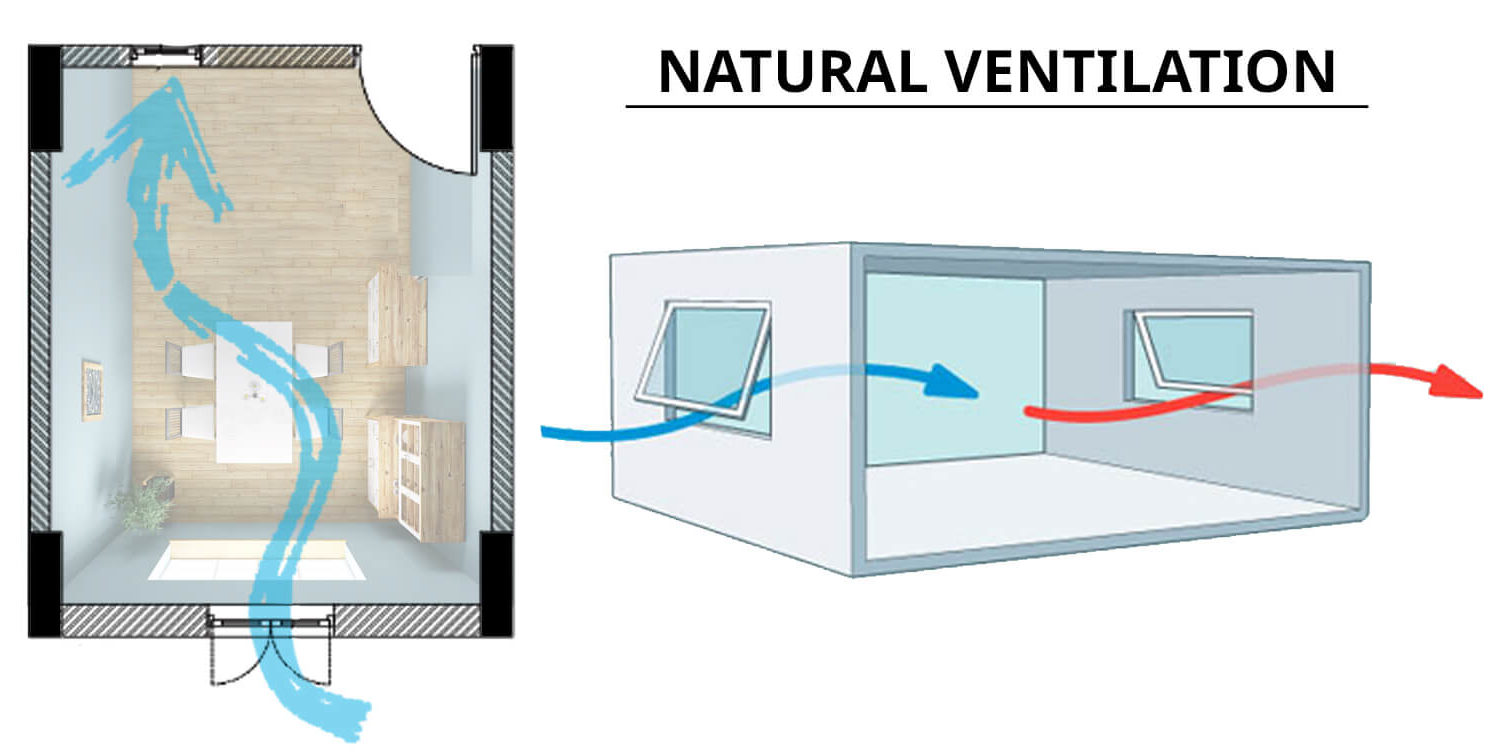Air movement is caused by the rise of warmth and the sinking in cool, cooling air. As the air over the land becomes warmer it rises, creating a region that is low pressure. If it continues rising it cools and then shifts towards water surfaces which then fall and create a region of high pressure and push cold air toward the ground. The movement of these areas is the reason for the wind. You can contact www.syp-urban.com/servicios/ventilacion-natural for natural ventilation in buildings.

Image Source: Google
Different types of natural ventilation
Natural ventilation is the use of environmentally-friendly systems that do not require any automated or mechanical solutions. Apart from being more sustainable, natural ventilation can also be more efficient in terms of cost and relies on natural external elements like the wind and temperature of the indoor space as well as the surrounding area.
Single-Sided Ventilation
Single-sided ventilation is the process of creating openings on the opposite side of a structure. It is utilized to let natural air circulate through the space in projects that have a small area. Single-sided ventilation systems are also utilized in cases where cross-ventilation is not possible due to environmental or structural restrictions.
Cross Ventilation
Cross ventilation is the process whereby the ventilation holes in structures are located on walls that are adjacent or opposite that allow air to enter through both directions, traverse spaces, then exit in one direction to exit in the other. The system is commonly employed in structures that are located in areas of high temperatures because it causes continuous air circulation inside the structure, thus reducing the temperature of the interior.
